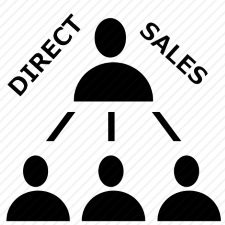Retail Store | Meaning | Types of Retail Stores
Table of Contents
What is a Retail Store?
A retailer or retail store is a business enterprise whose primary source of selling comes from retailing. Retailing includes all the activities involved in selling of goods or services directly to final consumer for personal, non-business use – Philip Kotler.
Retailers may be classified into three categories namely,

- Store retailers
- Non store retailers and
- Retail organizations.
9 Different types of retail stores
Today, consumer can shop for goods and services in a wide variety of stores. The important types of retail stores are:
- Speciality store
- Department store
- Super market
- Convenience store
- Discount store
- Off-price retailer
- Superstore
- Hypermarket; and
- Catalogue showroom.
1. Speciality store
Speciality stores carry very limited product lines with deep assortment. They offer a wide choice in terms of models, size, style, colour and other important attributes in the assortment carried.
2. Department store
A departmental store is a large retail outlet that handles a wide variety of lines of product. It has a wide assortment in each line and is organized into separate departments for purposes of buying, promotion, services and control. It is sometimes called mass merchandising departmental store e.g., military canteens.
3. Super markets
A supermarket is designed to serve the total needs for food, laundry and household maintenance products. It is relatively large in size. Its operation is low cost, low margin, high volume and self service in nature.
4. Convenience store
A convenience store is located near residential area. It is relatively small. It is kept open for long hours. A limited lines of convenience products are offered for sale. The prices charged are slightly higher.
5. Discount store
A discount store sells standard merchandise at lower prices. Higher volumes of sales compensate lower margins and increase the overall profitability. Discount retailing has moved into speciality merchandise stores such as sport goods stores, electronics stores and book shops.
6. Off price retailer
An off-price retailer sells left over goods, over runs, and irregulars obtained at reduced prices from manufactures or other retailers. Off price retailers may be of three types.
1. Factory outlets
These are owned and operated by manufacturers. They carry the manufacturer’s surplus, discontinued or irregular goods. e.g., dinner ware, shoes, upscale apparel, etc.
2. Independent off price retailer
Independent off-price retailers are owned and run by entrepreneurs or by divisions of larger retail corporations.
3. Warehouse clubs
These are otherwise known as wholesale clubs. They sell a limited selection of brand-name grocery items, appliances, clothing etc.
7. Super store
Super stores meet consumers’ total needs for routinely purchased food and nonfood items.
8. Hyper Markets
Hyper markets originated in France. Hyper markets combine speciality stores, limited line stores in a single level store. Product assortment goes beyond routinely purchased goods. It includes furniture, large and small appliances, clothing items, etc.
Bulk display and minimum handling by store personnel are the other features present in the hyper markets. Discount is offered to customers who are willing to carry heavy appliances and furniture out of the store.
9. Catalogue showroom
Customers order goods from a catalogue in the showroom. Then, they pick these goods up at a merchandise pickup area in the store.


